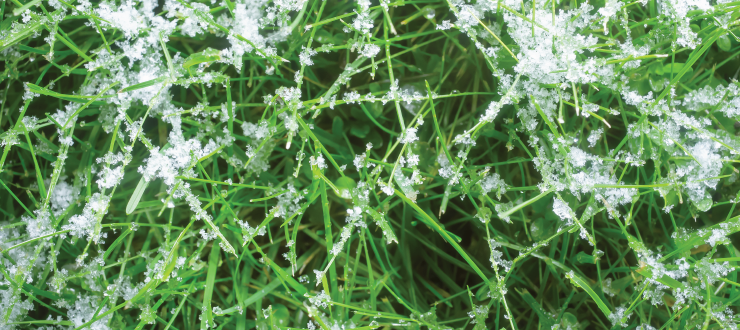
Protecting Your Lawn During Winter
October 22, 2020
Cooler weather is just around the corner and that means it is time to complete some fall prep to help your lawn survive the long, cold winter. Your to-do list should include aerating the turf and reinvigorating think areas with compost and seed. Test your soil before adding any nutrients. A soil test can be purchased online, at a garden center, or by contacting your local extension agency. Taking steps to prepare your lawn now will reap benefits come spring. Here’s how to do it.
- Give Your Lawn a Haircut. Before you can add beneficial nutrients to your lawn, you need to be able to get to the soil and root system underneath. Mow your lawn short, at least down to 1 to 1.5 inches. If your grass is higher than 3 inches, mow it down in phases so you don’t stress the grass.
- Aerate the Grass. Aeration uses hollow tines to pull out plugs of soil. Aeration is beneficial to your lawn because it reduces compacted soil and allows fertilizer and water to reach root systems. Just a quarter to a half-inch of compacted soil can affect the health of your lawn. Choose a day when your lawn is moist, but not soggy, to allow the aerator to easily penetrate the ground. You can rent a machine to aerate your lawn, or hire a lawn professional to do the job.
- Cover Bare Spots. Topsoil that’s left exposed to winter weather can quickly get stripped of its essential nutrients. Cover the bare spots with a half-inch of a good, dry, crumbly compost. The compost will protect the soil and prepare it for reseeding.
- Apply Fertilizer and Lime. Applying fertilizer now will give lawns a growing boost come spring as the nutrients have all winter to seep into the soil. Use a rotary spreader to distribute a high-phosphorus fertilizer and lime, if your soil tested acidic. Spread fertilizer and lime when the grass is moist, not dry, and not soggy. Don’t apply it too late, when there is a chance of frost.
- Reseed with a Great Seed. Reseeding now with one of Ragan & Massey’s Mayberry blends will give your grass a head start against weeds come spring. It also means it will have to fill in any bare spots before the lawn goes completely dormant. Using our proprietary centipede seed is a great choice as it is 99% weed-free, low maintenance, and grows in even poor soil conditions. Fill your spreader with Mayberry seed and cover the areas you have composted.
- Rake and Water. Use a rake, tines up, and gently mix the seeds into the compost. Water lightly, two to three times a day until the seeds start to sprout. Keep watering once the grass begins to grow. Mow it again when it reaches three inches high, bagging the clippings. Once the grass goes dormant, mow it down again to 1 to 1.5 inches to put it to bed for winter.
Finishing your fall prep before winter arrives will help make sure it is lush and healthy come spring. Mayberry seed can be found in stores. Go to our Where to Buy page to find a retailer near you.